HOT TOPIC #26: July 15, 2020 COVID-19 updates from San Juan County around subjects on the minds of islanders
Posted July 15, 2020 at 9:29 am by Tim Dustrude
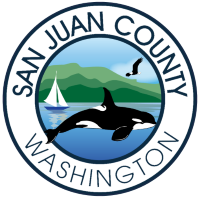 Digging Deeper into Contact Tracing
Digging Deeper into Contact Tracing
A more detailed look at how public health staff work to limit the spread of COVID in our community. This is by no means our most concise Hot Topic, but does contain useful info for those looking to understand a bit more about the public health response.
As of July 14th, there have been 22 reported positive COVID-19 test results from people residing in and/or who have been tested in San Juan County. For each of these, the San Juan County Health Department has performed extensive investigation and contact tracing.
Please note that sometimes there have been people with a listed address in San Juan County who test positive but who have not recently been in the islands and have no risk of local transmission. These cases may be included in the official WA State Department of Health (DOH) numbers as a San Juan County case, but not in the numbers reported by San Juan County. This discrepancy can be confusing, and whenever possible, local public health staff work to ensure the location of each case is reported accurately. In most cases DOH adjusts these cases so they are assigned to the proper County, though this may take some time to occur.
Some investigations are relatively simple and only one or two close family members are identified as being at risk for transmission. In more complex cases, dozens of contacts may be identified.
Each one of those individuals is then spoken to in order to determine whether they were at risk of being exposed. For those who are found to have been exposed, public health nurses work with that person to quarantine them and determine whether follow up testing is recommended (often it is). Additionally, they remain in communication daily for 14 days after the exposure to assess whether the person has developed symptoms, to ensure they have access to a medical provider for follow up, and confirm that any additional needs are met in order to successfully quarantine.
This is laborious, important work and it is critical to minimizing the potential for community spread in the islands. It is also a clear example of why being thoughtful about engaging in close contact with those from outside our households is so important.
In addition, County public health staff have been notified of 10 individuals who have tested positive for COIVD who traveled to the islands to work, visit friends or family, or vacation. These cases are not reported as San Juan County cases (they are reported for their home jurisdiction, where a simultaneous investigation is undertaken as well). As a result of these cases, close contacts to those individuals have been contacted and assessed. None of these cases have resulted in additional confirmed positive cases in the islands.
There are some situations where a close contact is asked to quarantine but is not tested, usually because they are close household contacts who have no choice but to be exposed to the patient throughout the maximum quarantine period. They are monitored for symptoms through daily check-ins.
For public health staff, the definition of a close contact is being less than six feet apart for fifteen minutes or more. These situations aren’t always easy to quantify, and exceptions certainly occur- but that definition is the accepted standard.
In almost all cases, those found to be highest risk for transmission are close household contacts. These are family members, or those who have interacted with the patient in their home for extended periods. Other high-risk situations are those who work closely together, either indoors or in a vehicle. In general, there is little risk for those who have simply passed a COVID positive person on the street or who had casual contact with them in a store, market, or other short-term setting.
While our understanding of how and when COVID is spread is constantly evolving, there are a few things that are very clear:
- Being indoors is much riskier than being outdoors.
- Covering our faces is critically important in preventing spread. In many cases whether the patient was covering their face is the difference between a large number of people being infected or not. Remember, covering our faces protects others in case we are unknowingly sick, rather than protecting us from others. Many people who have COVID don’t have symptoms when they are infectious.
- We need to think carefully about how we choose to spend time with others, and also what decisions are being made by those we interact with. We can be very careful, but if our family members or others we are in close contact are less thoughtful, then their increased risk becomes our increased risk.
- Both in Washington and nationally, increasing numbers of positive cases are resulting from gatherings of individuals. In many cases, those gathering are composed of younger individuals who may not be taking proper precautions to minimize the risk of disease transmission. Please remember that interacting with more than 5 people per week is still prohibited in Phase 2, the current status of San Juan County.
- There is no single most likely source of transmission. It could be a visitor to the island on vacation or working here. It could be a family member or friend visiting an islander. It could be an islander who has traveled to the mainland. Of these, the last two have caused the majority of cases to date in San Juan County.
- Case investigation and contact tracing is the best tool we have to limit spread once it occurs, and this difficult work is done by a small but dedicated team of islanders working hard on our behalf. They deserve our support and appreciation to a degree that is nearly impossible to convey.
- And most importantly we all need to understand that cases are increasing in many locations in our across the state and nation and there is no way to know who might be infected. We need to be careful and maintain precautions. Covering our faces, insisting on face coverings from those we interact with, keeping close to home, limiting exposure to others, and washing our hands frequently all matter. High risk individuals need to be especially careful.
This is an evolving situation, and nothing about it is easy nor simple. Our aim with this article is to convey the complexity and challenges faced by our local public health team, and to highlight their commitment and success to date in helping to minimize community spread in the islands.
Thank you for your ongoing support, patience, and willingness to make sacrifices for our families, our friends, our neighbors and our islands.
You can support the San Juan Update by doing business with our loyal advertisers, and by making a one-time contribution or a recurring donation.
Categories: Community, Government, Health & Wellness


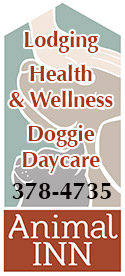
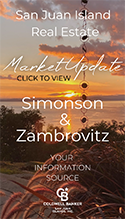



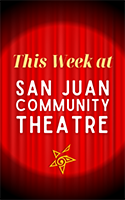
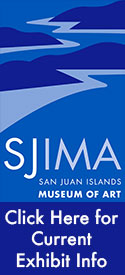

No comments yet. Be the first!
By submitting a comment you grant the San Juan Update a perpetual license to reproduce your words and name/web site in attribution. Inappropriate, irrelevant and contentious comments may not be published at an admin's discretion. Your email is used for verification purposes only, it will never be shared.